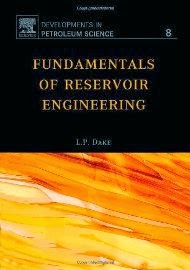Petroleum Engineer's Guide to Oil Field Chemicals and Fluids by Johannes Fink evaluates the progress within the space of oil discipline chemicals and components of the last decade from a rather chemical view. The material offered is a compilation from the literature by screening critically approximately 20,000 references.
The book is ordered in keeping with functions, just in the way in which how the roles are emerging in practice. It starts with drilling, goes to productions and ends with oil spill. A number of chemical compounds are used in multiple disciplines, and to those separate chapters are devoted. Two index registers can be found, an index of chemical substances and a basic index.
Condensed for readability, this handbook gives users with information on oil area chemicals such as drilling muds, corrosion inhibitors gelling agents, scale inhibitors, and micro organism control. Every chapter follows the same template. In the introductory comments of every chapter a brief introduction to the chemical or polymer kind is given and earlier monographs and critiques coping with the topic are listed for fast reference.
The text continues with monomers, polymerization and fabrication methods and discusses elements of application. After this, suppliers and commercial grades are collected, as well as safety aspects. Chemical compounds are ordered by use including drilling muds, corrosion inhibitors, and bacteria control. It also includes cutting edge chemical compounds and polymers similar to water soluble polymers and viscosity control with helpful index of chemical substances as well as a general chemical index.
Oilfield chemical demand has risen 4.3% yearly by means of 2011. Beneficial properties are driven by a rise in rig counts, extra use of well stimulation and enhanced oil recovery (EOR) methods, and extra deepwater drilling and production. It is a guide to the benefits and trade-offs of numerous oil area chemical compounds used within the petroleum and natural gas business today.
Oil discipline chemical compounds are gaining growing significance, because the resources of crude oil are decreasing. The growing demand of more subtle methods within the exploitation of the pure assets emerges for this reason.
More details about this book...
or
Download Petroleum Engineer's Guide to Oil Field Chemicals and Fluids PDF Ebook :























